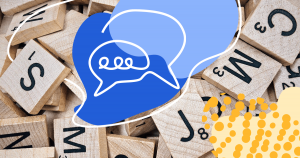Here comes Google causing butterflies in the SEO professional’s belly once again! Now the news is the Interaction to Next Paint (INP) that will replace the First Input Delay (FID) in the Core Web Vitals report of Search Console.
But don’t worry, this time we won’t be in a rush, as Google has given you a distant deadline to carry out the optimizations on your website: March 2024.
The company has already been experimenting with this user experience metric since December 2022. And in May of this year it was confirmed that the metric will no longer be a test, but to finally incorporate it into the Core Web Vitals report by March 2024.
Well, I want to take a step back so everyone is on the same level, okay? So, first I’ll bring a brief description of what these metrics are, the concept of INP and then I’ll show how SEO professionals and brands can optimize their websites for this change.
What is Interaction to Next Paint?
Interaction to Next Paint (INP) is a metric that makes up the Google Search Console Core Web Vitals report for evaluating the user experience on a page. The INP measures the time between one interaction and another that the user made on the page, and will indicate the longest interaction.
In Google’s words, “INP observes the latency of all interactions a user has made with the page, and reports a single value which all (or nearly all) interactions were below. A low INP means the page was consistently able to respond quickly to all—or the vast majority—of user interactions.”
And what are the INP values that Google considers good or bad?
- Good: below 200 milliseconds
- Needs improvement: between 200 and 500 milliseconds
- Bad: Above 500 milliseconds
According to Google, “To ensure you’re hitting this target for most of your users, a good threshold to measure is the 75th percentile of page loads, segmented across mobile and desktop devices.”
Respecting this millisecond mark, Google considers that you are delivering a good user experience. Therefore, your page also earns points in search rankings, see?
And at this point you must have already understood what Core Web Vitals are, right? This is a Google report that SEO professionals and web developers can track through Google Search Console.
It is a great tool for you to deliver a good user experience via your website or blog. Which in turn favors good ranking in Google searches.
There are more, but three key metrics are vital:
- Largest Contentful Paint (LCP) which measures loading performance by analyzing page load.
- First Input Delay (FID) which measures interactivity through the first input delay.
- Cumulative Layout Shift (CLS) which measures the visual stability of the page across the highest burst of layout shift occurrences.
The values that Google considers optimal for each of these metrics are illustrated in the image below.
Just before moving on to the next section, I thought it would be interesting to explain here the “paint” of all these metrics.
Fun fact! “Paint” does not refer to literal painting, but to the process of rendering visual elements on the page. A more accurate translation of “paint” in the context of LCP or INP would be “rendering” or “drawing” the visual elements on the page.
Replacement: INP enters, FID leaves
To explain the reason for the change, there’s no action fairer than giving a voice to the Google Chrome team.
“While it did improve the way we measure responsiveness, FID wasn’t without limitations. The name itself actually gives away two such limitations: “first input” and “delay”. FID only reports the responsiveness of the first time a user interacts with the page. Even though first impressions are important, the first interaction is not necessarily representative of all interactions throughout the life of a page. Further, FID only measures the input delay portion of the first interaction, which is the amount of time the browser had to wait (due to main thread busyness) before even beginning to handle the interaction.”
Rick Viscomi, DevRel Engineer at Google
Do you understand the progress here? If today it is possible to say that your website is great in terms of UX through the FID, tomorrow it will be even more accurate with the INP. After all, we are expanding measurement to all interactions. Fair enough, isn’t it?
Now Google will force us to ensure good interactions at all times and that’s great! So, let’s now understand what’s needed to optimize your website by March 2024.
Optimize for INP!
According to Google, these are the best practices for you to optimize your site for INP:
- Finding slow interactions in a test environment
- Diagnose slow interactions in a test environment
- Identify and reduce input lag
- Optimize event callbacks
- Minimize presentation delay
For each of these optimizations, Google has already produced articles to help you optimize your site. You can find this compilation on the Google Chrome developers blog.
And if you don’t have knowledge on the subject or don’t have expertise within your company, I advise you to invest in technical SEO, because your competition will. After all, the point here is to maintain or increase traffic to your site and deliver a good user experience.
The professionals you will need to put these best practices into action are web developers, technical SEO analysts and project managers. I suggest that you put together an action plan to apply the improvements to your website and have February 2024 as the deadline.
We know that in an ideal world, eight months is enough time to gather the budget and expertise and get down to business. But don’t be fooled! If your planning doesn’t start right away, you could pay dearly in March (with organic traffic).
I hope I managed to clarify the main doubts about Core Web Vitals, Interaction to Next Paint and the change that is coming.
Do you want to continue to be updated with Marketing best practices? I strongly suggest that you subscribe to The Beat, Rock Content’s interactive newsletter. We cover all the trends that matter in the Digital Marketing landscape. See you there!







